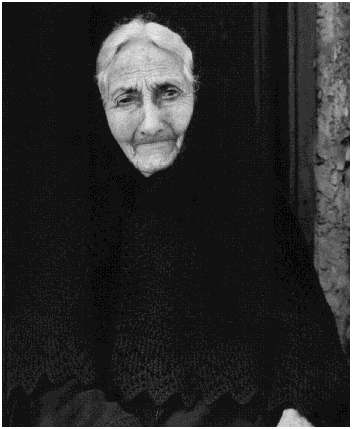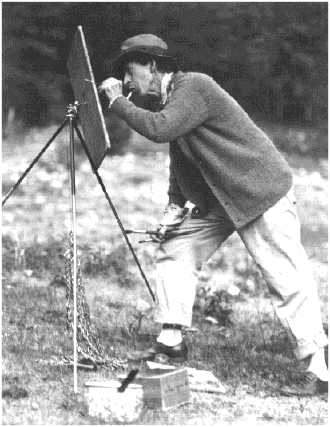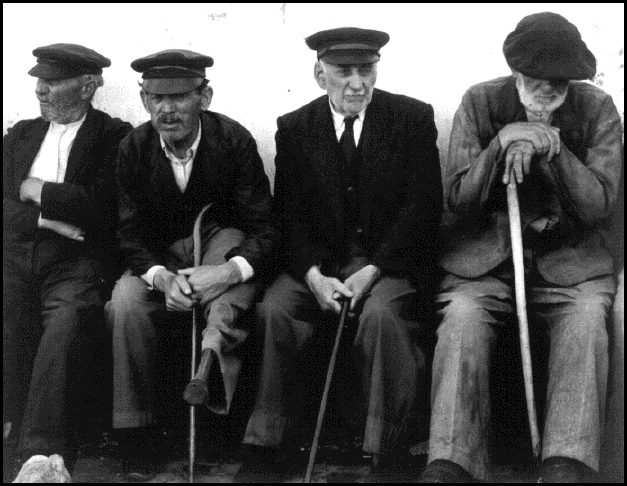Photographs from the
J. Paul Getty Museum
Anne M. Lyden
(J. Paul Getty Museum)

Less than a third of the 186 black-and-whites Strands owned by the Getty are shown in this book, and we have chosen three of them for viewing here because they are, as the juveniles would say, awesome.
The old lady up top is Kate Steele from the Hebrides, 125 years or so of age. She comes to us three times. She's on the cover; she turns up on Plate 44. Finally there is a photo of a photo (of a photo ... it's all copies: there is no reality, even in the world of photography.) This last shows Strand hidden by his huge camera, the sweet toothless old granny sitting in the doorway, awaiting her fate (or her upper plate), complete with daughter off to one side and cat looking at camera #2, the one that is making the picture of the picture. The only soul made nervous by all this except me seems to be the cat, who might be preparing to run up Strand's leg any moment now.
 The four old guys shown down there at the bottom are from Douarnenez, Finistère. Ms. Lyden, who works as Associate Curator in the Department of Photographs at the Getty Museum, and wrote the text for Strand should know far more than I about him and his photographs. But she seems stuck for suitable commentary to sausage in there between the plates. Of the four old gents below, she ruminates:
The four old guys shown down there at the bottom are from Douarnenez, Finistère. Ms. Lyden, who works as Associate Curator in the Department of Photographs at the Getty Museum, and wrote the text for Strand should know far more than I about him and his photographs. But she seems stuck for suitable commentary to sausage in there between the plates. Of the four old gents below, she ruminates:- In this study Strand compresses the four fishermen within the borders of the photograph. (Right-o). Although peering out from underneath their hats, none of them look directly at the camera. (Right again). They do not appear to be engaged by the artist or even aware of his presence (maybe they were just wishing this pushy guy with the camera would go away); rather, they seem lost in their own thoughts. (Hell, you try spending your life fishing in the icy waters off the coast of Finistère; you'd be lost too). Faces weatherbeaten and beards white with age (or beards weatherbeaten, faces white with age), these ancient mariners are the living legacy of the small fishing town (or perhaps, guessing by their downcast visages, they may be the dying legacy.)
The painter you see halfway up the page there is John Marin. He looks a bit like Norman Rockwell, but all of his paintings I called up from Google tell me that what Marin was sketching were hardly grandfatherly faces and smiling children around the Thanksgiving table (or even sullen fishermen). His art was neo-Impressionist stuff: wispy bridges, pale churches, soft cityscapes and iffy sailboats. Obviously he didn't know squat about stacking things up like Cezanne did, creating that lunatic tension: Marin's renderings were more a colorful, washed-out jumble. No wonder he stood before his canvas, wound up like that, like a watch. He couldn't wait to get it all down.
